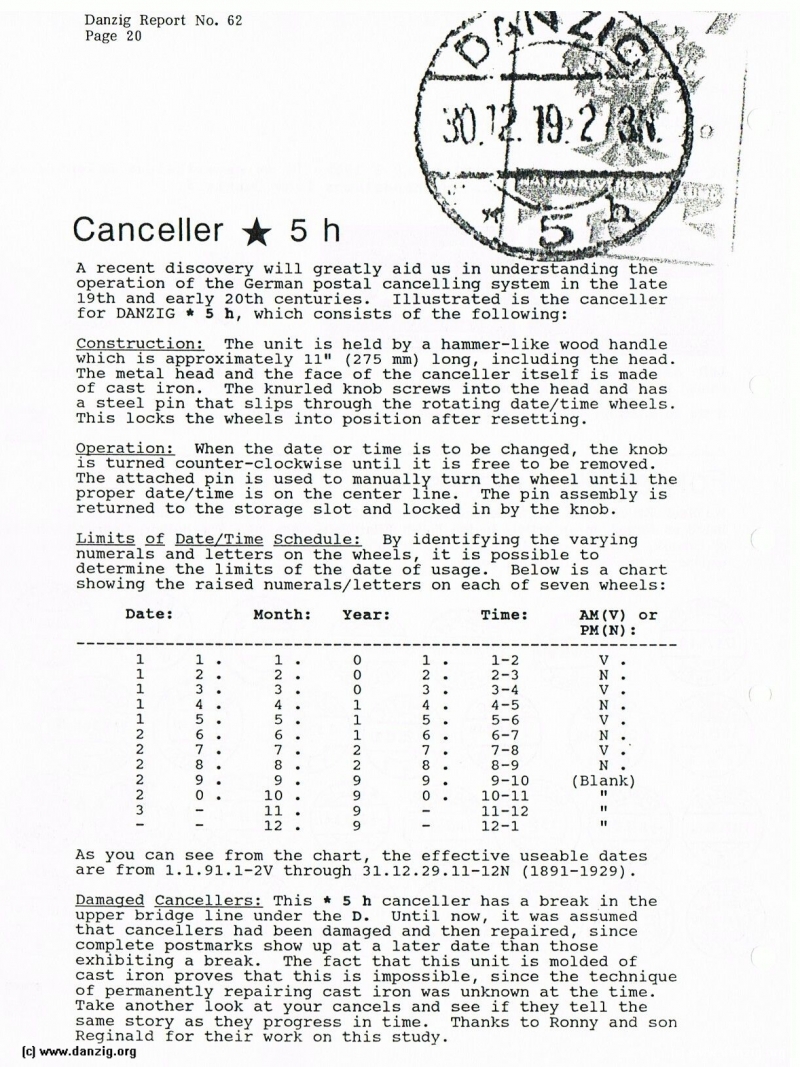
Canceller * 5 h
A recent discovery will greatly aid us in understanding the operation of the German postal cancelling system in the late 19th and early 20th centuries. Illustrated is the canceller for DANZIG * 5 h, which consists of the following:
Construction: The unit is held by a hanuner-like wood handle which is approximately 11” (275 mm) long, including the head. The metal head and the face of the canceller itself is made of cast iron. The knurled knob screws into the head and has a steel pin that slips through the rotating date/time wheels. This locks the wheels into position after resetting.
Operation: When the date or time is to be changed, the knob is turned counter—clockwise until it is free to be removed. The attached pin is used to manually turn the wheel until the proper date/time is on the center line. The pin assembly is returned to the storage slot and locked in by the knob.
Limits of Date/Time Schedule: By identifying the varying numerals and letters on the wheels, it is possible to determine the limits of the date of usage. Below is a chart showing the raised numerals/letters on each of seven wheels:
As you can see from the chart, the effective useable dates are from l.l.9l.l—2V through 31.l2.29.ll—l2N (1891—1929).
Damaged Cancellers: This * 5 h canceller has a break in the upper bridge line under the D. Until now, it was assumed that canceliers had been damaged and then repaired, since complete postmarks show up at a later date than those exhibiting a break. The fact that this unit is molded of cast iron proves that this is impossible, since the technique of permanently repairing cast iron was unknown at the time. Take another look at your cancels and see if they tell the same story as they progress in time. Thanks to Ronny and son Reginald for their work on this study.
Danzig Report Vol. 1 - Nr. 62 - January - February - March - 1989, Page 20.
Hits: 3845
Added: 27/06/2015
Copyright: 2025 Danzig.org

